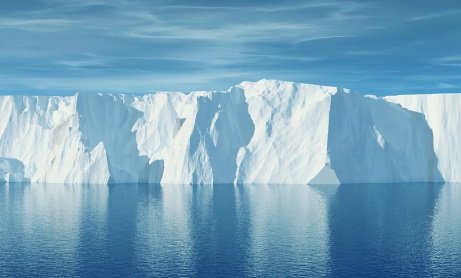As climate change continues to threaten the Arctic, researchers are exploring an innovative solution—an approach to “refreeze” the Arctic Sea. This method, currently in its trial phase, involves pumping seawater onto existing ice to create thicker, more resilient ice layers. The promising early results suggest that this strategy could help mitigate some of the most immediate impacts of Arctic ice loss, a crucial concern given the region’s rapid warming.
The Urgency of Climate Threats in the Arctic
The Arctic is warming at an alarming rate—nearly four times faster than the global average. If this trend continues, scientists predict that the region could be ice-free during the summer months by the 2030s. Such a scenario would have catastrophic consequences for global ecosystems, disrupting weather patterns, accelerating sea-level rise, and affecting the planet’s climate stability. Over the past few decades, around 13% of Arctic sea ice has disappeared every 10 years, raising the urgency to find effective solutions.
The Proposed Refreezing Solution
To counteract this rapid ice loss, scientists are testing a relatively simple yet potentially effective method: refreezing thin areas of Arctic ice by pumping seawater onto them. The idea is straightforward—seawater spreads across thin ice surfaces and freezes more quickly during the winter months, creating a thicker and more durable ice layer. The thicker ice is expected to last longer during warmer seasons, slowing down the rate of ice melting and providing a temporary buffer against the impacts of climate change.
How Does the Refreezing Process Work?
The process begins by identifying regions of the Arctic where the ice is dangerously thin. Engineers drill small holes in the ice and pump seawater through these openings. As the water spreads across the frozen surface, the cold Arctic temperatures cause it to freeze more rapidly than it would under natural conditions. This artificial thickening of the ice forms a stronger, more resilient layer that can better withstand the warmer seasons.
Initial trials have demonstrated the viability of this technique on a small scale, and researchers are optimistic about its potential to be scaled up to cover larger areas of the Arctic. In addition, some experiments have introduced the use of hydrogen as a renewable energy source to power the pumps, further reducing the environmental impact of the process.
Previous Innovations and Renewable Energy Solutions
One of the most promising aspects of the refreezing project is the use of hydrogen-powered pumps, which eliminates the need for fossil fuels. This move towards renewable energy aligns the project with broader efforts to reduce greenhouse gas emissions and limit the overall impact of climate change. By utilizing clean energy, scientists hope to make the refreezing process not only effective but also sustainable in the long run.
Risks and Concerns
Despite the early successes, some experts caution that this method, while innovative, is not without potential risks. One concern is that the process may lead to a reduction in snow cover, which could disrupt the delicate Arctic ecosystem and affect wildlife that depends on the snow for survival. There is also the possibility that the refreezing process could interfere with natural ice dynamics in unforeseen ways.
Critics argue that while the refreezing technique might offer a short-term solution, it is not a substitute for addressing the root causes of climate change, such as reducing carbon emissions and transitioning to renewable energy sources. The method could provide temporary relief for Arctic ice, but without broader climate action, the region will continue to face severe challenges in the coming decades.
A Step Forward, But Not a Complete Solution
The research into refreezing Arctic ice represents a significant step in the ongoing battle against climate change. However, it is only one piece of a much larger puzzle. While this method could help protect the Arctic in the short term, more comprehensive strategies will be required to address the broader global crisis. Long-term solutions such as reducing greenhouse gas emissions, transitioning to renewable energy, and implementing global climate policies remain critical to preserving not only the Arctic but the planet’s overall climate stability.
As scientists continue to refine this promising approach, it serves as a reminder that innovation and creative thinking are essential in tackling the world’s most pressing environmental challenges. However, the ultimate success will depend on a unified, global effort to combat climate change at its source.


